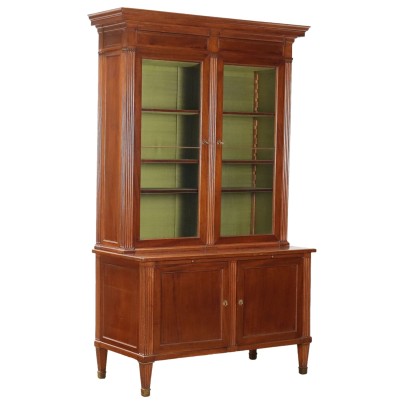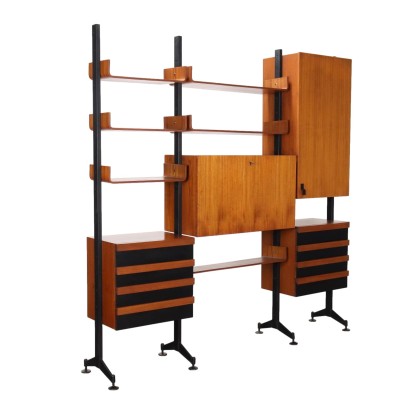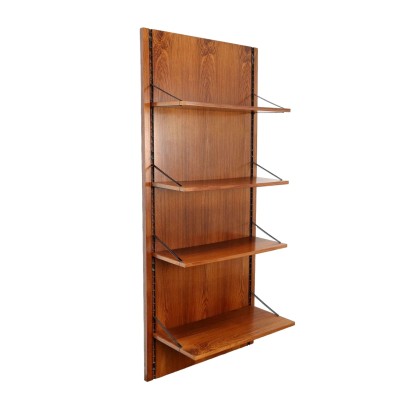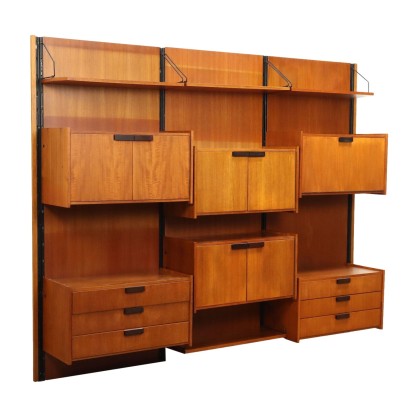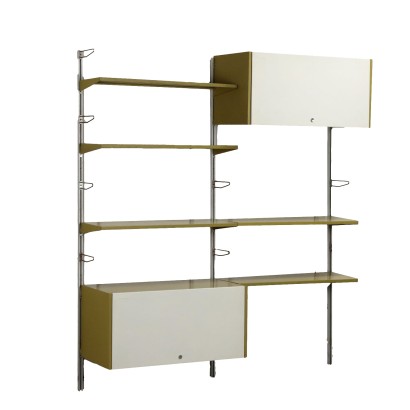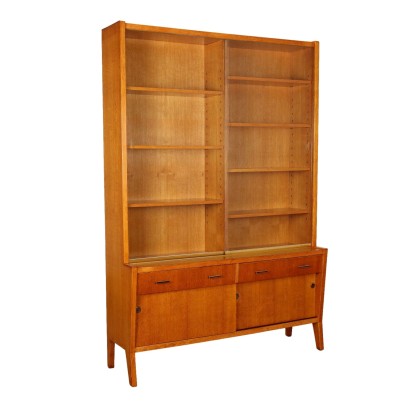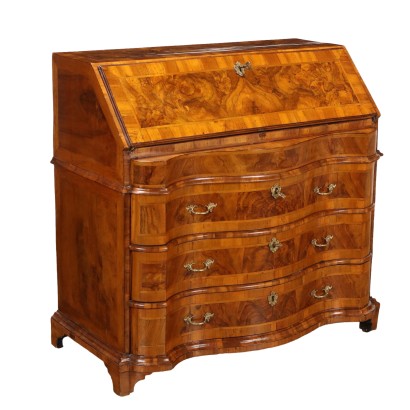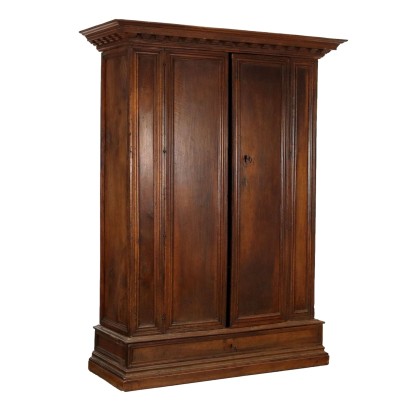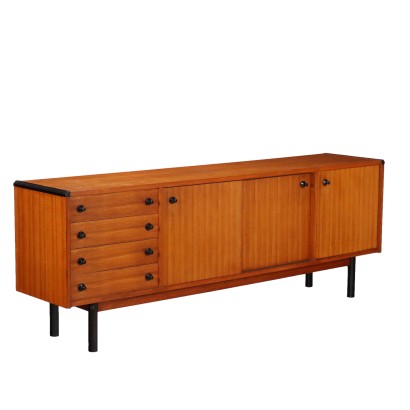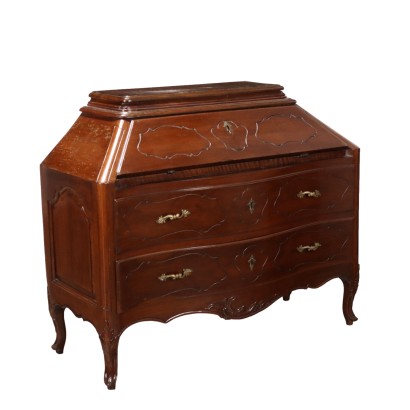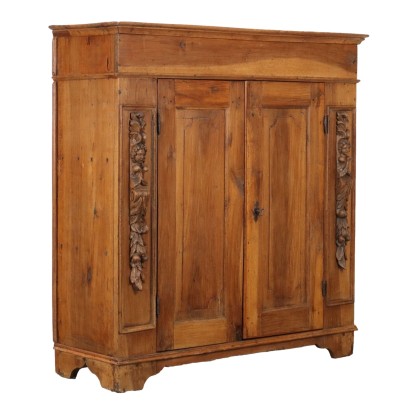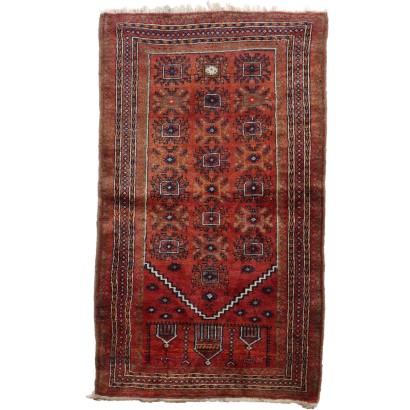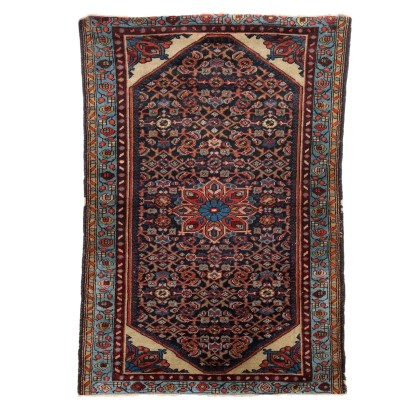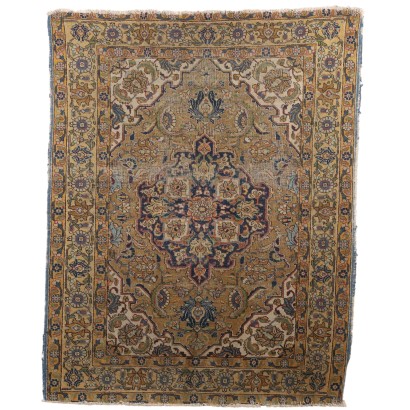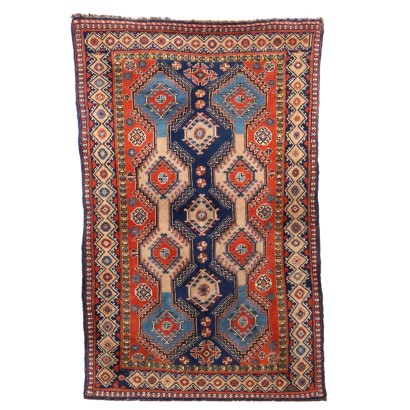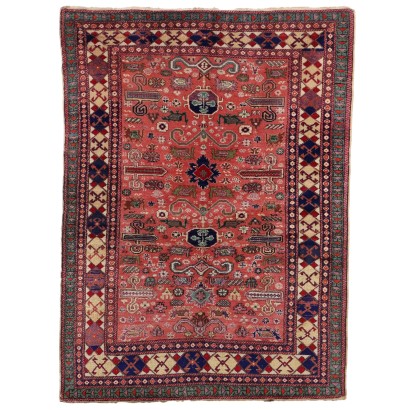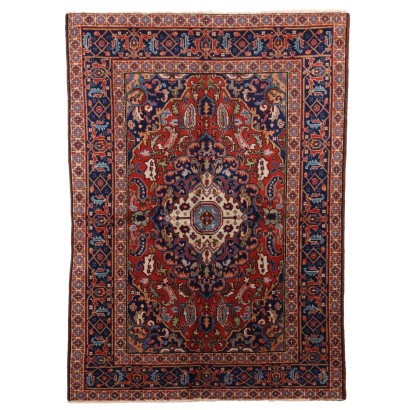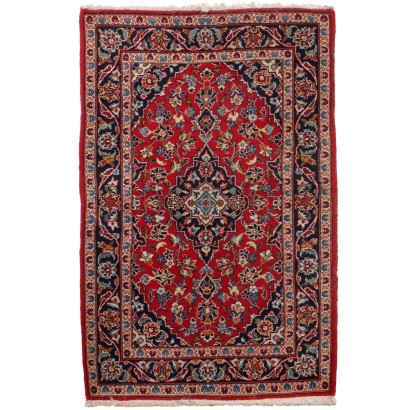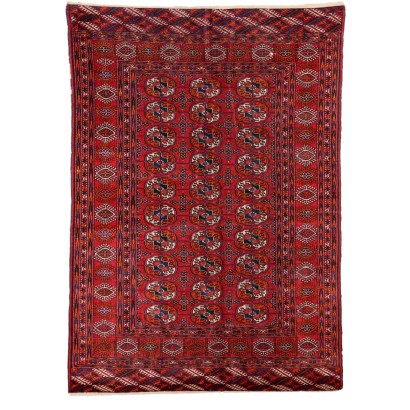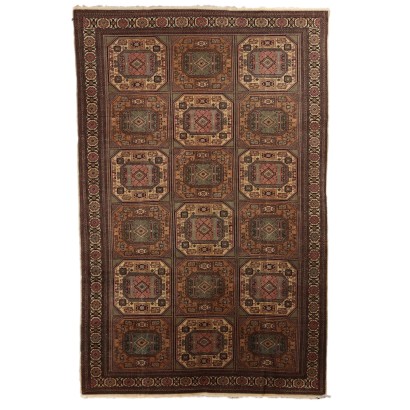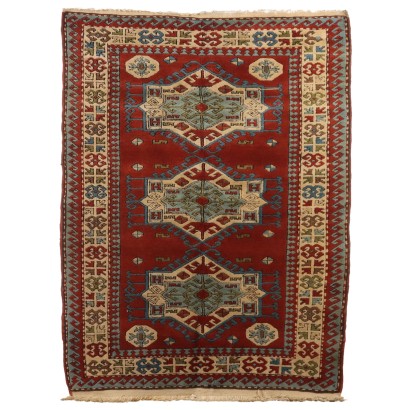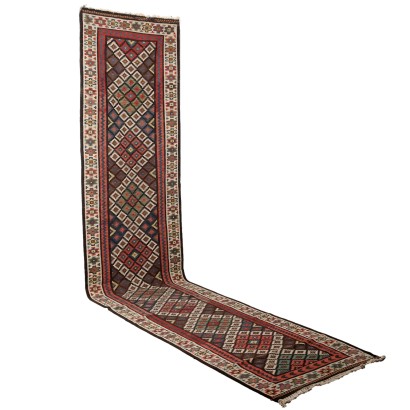Mahogany Directory Bookcase - Austria Early 19th century
Features
Austria Early 19th century
Style: Directoire (1790-1804)
Age: 19th Century / 1801 - 1900
Origin: Austria
Main essence: Mahogany
Description
Early 19th century bookcase in mahogany, two doors in the base, extractable writing top covered in Moroccan, upper part with two glass doors with separation support in the middle of the door in brass. The uprights are gouged in semi-columns and end with drip trays in gilded bronze. Interiors in larch and oak, the cutlery drawers in the base were added in the 20th century; adjustable shelves in the upper part; feet in the shape of a truncated pyramid gouged with collar and shoes in gilded bronze.
Product Condition:
Product that due to age and wear may require restoration and polishing. We try to present the real condition of the furniture as completely as possible with the photos. If some details are not clear from the photos, what is reported in the description is valid.
Dimensions (cm):
Height: 216
Width: 133
Depth: 61
Additional Information
Style: Directoire (1790-1804)
In this short period of time, we see, in the furniture, an accentuation of the archaeological rigor and at the same time an accentuated linear severity is formulated that in fact preludes and anticipates forms and ornamentations that will then be typical of the Empire style.The furniture of the Directoire era abandons the delicate pastel colors that characterize the Louis XVI production in favor of the dark magnificence of mahogany, which in its vast range of essences will be by far the most appreciated wood in this period.
Added to this is a general abandonment of the floral inlay trends in favor of simple fillets in ebony or amaranth-colored wood, the insertion of light linear profiles in brass is very fashionable.
The innovations are grafted onto a trend that normally finds typologies already widespread in the neoclassical era, and in some cases there is no lack of significant innovations: the chairs, often painted in light colors and archaeological motifs, are distinguished by the typical upholstered or openwork backrest that rolls up "en crosse" and in an "S".
The back legs are very fashionable if curved like a sabre and the typology with an enveloping backrest, called gondola, becomes widespread.
For studies and libraries, chair models characterized by a high concave backrest, called "en hémicycle", with a usually solid structure and a seat covered in leather, become widespread.
The use of the secrétaire finds wide diffusion and the typology of the toilette is completely new, now similar to a console on which a tilting mirror rests within hinged plates.
Certainly the most imaginative novelty of this period is the graceful psyche, consisting of a large oval or rectangular mirror, mounted within high wooden supports and generally supported by sabre-shaped legs.
This is the era in which the oval or round dining table became widely used, while the desk continued to maintain the shape of the à bureau plats models already known in the previous era.
In this period there were no particular technical-constructive innovations, the technologies remained those already in use since the beginning of the mid-eighteenth century.
Find out more about the Directory with our insights:
The unknown gaming table
INSERT ADDITIONAL LINKS:
The Austrian taste of Baroque
The furniture of the Kingdom of Naples
The end of the Directory and the beginning of the Empire
The birth of the private library
Age: 19th Century / 1801 - 1900
19th Century / 1801 - 1900Main essence: Mahogany
It is one of the most precious and sought-after woods in cabinet making. It was discovered in Central America around 1600 and began to be imported to England in the 1700s. Much appreciated for its hardness and indestructibility, it became widespread following the blocking of walnut exports from France in 1720 and the consequent elimination of English import duties on mahogany from the colonies in America and India. The most valuable version comes from Cuba, but it became very expensive. At the end of the 18th century it began to be used also in France in Louis XVI, Directory and Empire furniture, its diffusion declined starting from when Napoleon, in 1810, forbade its import. It was generally used in the manufacture of elegant furniture, due to its characteristics and beautiful grain.Other customers have searched:
Librerie, étagère, teca, vetrinetta, scansia, mobile, scaffale, libreria..
Consulta anche le migliori librerie e vetrine su FineArt:
Leggi di più
Libreria 'Life' Roberto Monsani per Acerbis
Libreria, Giuseppe Speluzzi, Milano, ultimo quarto XIX secolo
Libreria anni '50 manifattura italiana
Libreria anni '60
Sideboard '503' Gianfranco Frattini per Bernini
Mobile Mario Vender anni '60
Trumeau Queen Anne, Inghilterra, 1705 ca.
Sull'antiquariato in generale dai un'occhiata anche a:
Classic Monday: da un pezzo dei nostri magazzini alla storia dell'antiquariato
L'antiquariato dalla A alla Z: il Dizionario dell'Antiquariato
Il dizionario dell'antiquariato - Lastronatura
Il dizionario dell'antiquariato - Mascherone
Il dizionario dell'antiquariato - Natura morta
Il dizionario dell'antiquariato - Opificio
Il dizionario dell'antiquariato - Pastiglia
Il dizionario dell'antiquariato - Savonarola
Il dizionario dell'antiquariato - Rosone
Intaglio barocco con motivo a ricciolo
Leggi di più
Libreria 'Life' Roberto Monsani per AcerbisLibreria, Giuseppe Speluzzi, Milano, ultimo quarto XIX secolo
Libreria anni '50 manifattura italiana
Libreria anni '60
Sideboard '503' Gianfranco Frattini per Bernini
Mobile Mario Vender anni '60
Trumeau Queen Anne, Inghilterra, 1705 ca.
Sull'antiquariato in generale dai un'occhiata anche a:
Classic Monday: da un pezzo dei nostri magazzini alla storia dell'antiquariato
L'antiquariato dalla A alla Z: il Dizionario dell'Antiquariato
Il dizionario dell'antiquariato - Lastronatura
Il dizionario dell'antiquariato - Mascherone
Il dizionario dell'antiquariato - Natura morta
Il dizionario dell'antiquariato - Opificio
Il dizionario dell'antiquariato - Pastiglia
Il dizionario dell'antiquariato - Savonarola
Il dizionario dell'antiquariato - Rosone
Intaglio barocco con motivo a ricciolo
Product availability
The product can be seen at Cambiago
Immediate availability
Ready for delivery within 2 working days from ordering the product.



